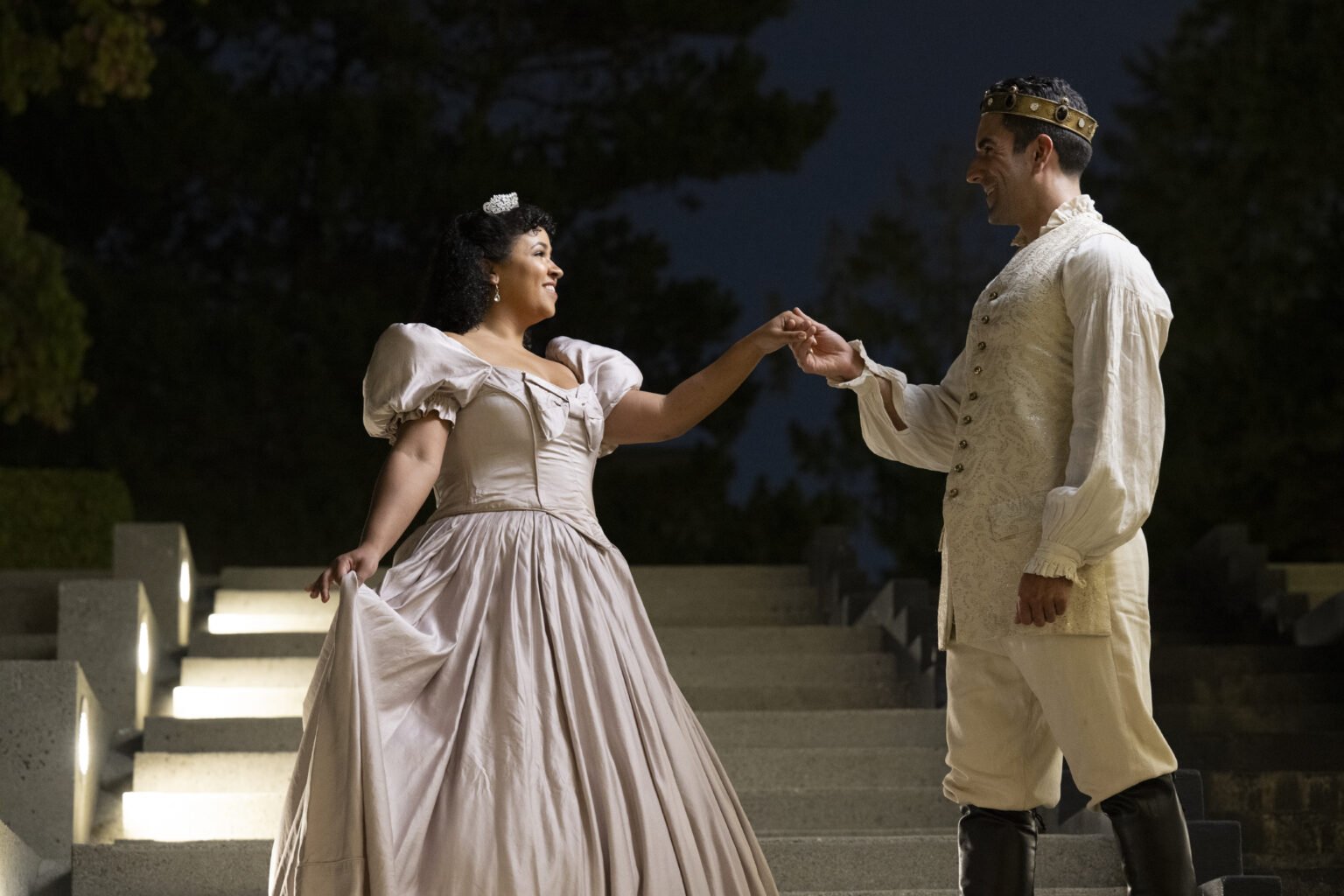Theatre review: Gateway Theatre’s modern take on Cinderella retains the charm of a classic fairy tale
Radiant acting, dazzling costumes, and a storybook set are among Johnna Wright’s take on Rodgers + Hammerstein classic
Rodgers + Hammerstein’s Cinderella.
Gateway Theatre presents Rodgers and Hammerstein’s Cinderella until December 31
A STORY’S INTERPRETATION can evolve with time and culture—a fact made wonderfully evident in Gateway Theatre’s smart and inventive new production of Rodgers + Hammerstein’s Cinderella.
While still a story about emerging from the ashes to triumph and find true love, this interpretation of the fairy tale also heavily emphasizes self-determination. Along with other messages that include using power and influence for good, director Johnna Wright’s rendition is an inspirational take on a classic that sparkles with timely relevance and strong local talent.
The staging of the 2013 Broadway revival features the music and lyrics of Broadway legends Richard Rodgers and Oscar Hammerstein II, based on a newer book by Douglas Carter Beane. Beane’s writing accounts for the story’s take on female empowerment and political justice, as we see our heroine, Ella, consciously make choices that weave her path. There’s also a subplot about democracy.
As Ella, Ali Watson is radiant, starting from the moment she steps out of a giant storybook set piece designed by Jennifer Stewart and Sophie Tang. Watson’s smile lights up the theatre and rarely leaves her face throughout the show. She exudes princess-quality kindness and has a beautiful soprano voice that complements her sincere storytelling in numbers such as “In My Own Little Corner”. It’s hugely satisfying to see Watson, who has played supporting characters in major shows throughout Vancouver over the years, step to centre stage and deliver a heartfelt performance.
Known as a popular leading man, Kamyar Pazandeh is back on-stage here as prince Topher, offering delightful charm and personality along with stunning vocals in such numbers as “Ten Minutes Ago” and “Loneliness of Evening”. Along with the obvious jokes, he also offers deft touches of humour, especially in his interactions with his horse, Buttercup—a creative prop that resembles a wooden cut-out of a carousel horse.
Ryan Maschke is a fabulous standout, making the most of his role as Lord Pinkelton, Topher’s sidekick. Maschke’s excellent tenor voice is showcased in “The Prince is Giving a Ball”, and his standout dancing features gorgeous lines and ballet technique. His dance partner in “Waltz for a Ball”, Ava Maddison, is also a picture of elegance from the minute she lifts a graceful arm to begin the exquisite partnering. The way the pair sweep across the stage is a classic fairy-tale vision.
Sarah Cantuba and Danica Kobayashi bring oodles of fun characterization to their roles of Charlotte and Gabrielle, Ella’s stepsisters, respectively. Cantuba is unapologetically crude and graceless, highlighted in the comical “Stepsister’s Lament”. Her take parallels nicely with the friendliness and open mindset of Kobayashi’s Gabrielle, and there’s great chemistry between Kobayshi and her romantic counterpart Ben Brown (the political revolutionary Jean-Michel).
Lossen Chambers brings a sinister, Disney-like villainess quality to the role of Ella’s evil stepmother, Madame, thanks to conniving vocalizations and facial expressions. Caitriona Murphy shows affectionate maternal warmth and guidance as Marie, and her gorgeous soprano voice soars in “There’s Music in You”.
One of the brightest stars of the show is costume designer Alaia Hamer, who has brilliantly created outfits that produce reveals that would be the envy of the Rupaul’s Drag Race runway. The costume transitions add to the show’s fairy-tale magic. Another simple but clever piece involves Ella’s carriage; cue more cut-out carousel horses.
Nicola Spinola’s creative choreography and staging include a cute transformation of a fox and raccoon into Ella’s footman and coachman, performed with charismatic physicality by Darian Ngai and Jaren Guerreiro, respectively. Spinola’s balletic movement in “Waltz for a Ball”, featuring couples in storybook ball attire, is beautifully executed by the cast. The ball scene is a reminder that, even as told through a modernist lens, this version of Cinderella is still a fairy tale at heart.
Wright's production is not the same Cinderella that audiences would have seen in Vancouver a decade ago. There’s great diversity on-stage, and it's inspiring that, more than ever before, children watching can see themselves reflected in the performers. One of the standout musical moments is Murphy’s solo, “There’s Music in You”, the key message of a production that emphasizes that's true for everyone—not just fairy-tale princesses.













